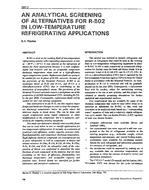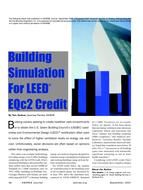An 850 square foot residential home was modeled to evaluate annual energy consumption using four energy modeling programs: CBECC-Res, EnergyPro 5, BEopt, and REM/Rate. Three different energy-efficiency scenarios were considered, with a baseline case representing compliance with California Title 24 energy efficiency standards. Differences in the programs’ calculation methodologies and in modeling assumptions resulted in varying estimates of annual energy consumption. Results from CBECC-Res were the lowest, and those from REM/Rate were the highest (as much as ~50% higher than CBECC-Res). The most significant factors affecting results of total annual energy consumption appeared to be differences in the way the building envelope was modeled and unique assumptions regarding fixed loads. Even when model assumptions were controlled, as was the case for CBECC-Res and EnergyPro 5, results varied by as much as 20%. REM/Rate utilized the simplest energy modeling engine, and generated results with much larger heating energy consumption than the other programs. This was attributed to its omission of solar heat gain through opaque exterior surfaces, as well as the inability to match the thermostat schedule to Title 24 standards.
Citation: NULL
Product Details
- Published:
- 2017
- Number of Pages:
- 8
- Units of Measure:
- Dual
- File Size:
- 1 file , 800 KB
- Product Code(s):
- D-LV-17-C055


